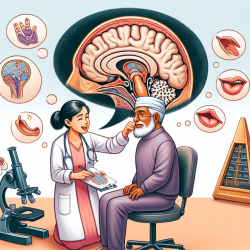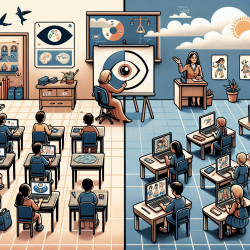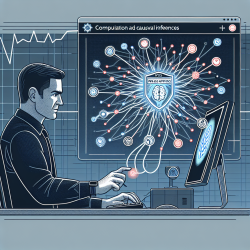Introduction
In the realm of speech-language pathology, the need for data-driven insights is paramount, especially when dealing with complex conditions like intractable epilepsy in children. The recent study titled Physical Feature Encoding and Word Recognition Abilities Are Altered in Children with Intractable Epilepsy: Preliminary Neuromagnetic Evidence provides compelling evidence that can be transformative for practitioners aiming to improve language outcomes in affected children.
Understanding the Study
The study utilized magnetoencephalography (MEG) to evaluate word recognition in children with intractable epilepsy. By presenting common nouns through both visual and auditory inputs, researchers identified significant delays in neuromagnetic responses in these children compared to healthy controls. Specifically, the study found delayed latency in the M1 response and reduced amplitudes in the M3 and M5 responses, indicating altered word recognition abilities.
Implications for Practitioners
For speech-language pathologists, these findings underscore the importance of integrating multimodal sensory inputs in therapeutic interventions. Here are some actionable insights:
- Multimodal Stimulation: Incorporate simultaneous auditory and visual stimuli in therapy sessions to potentially enhance word recognition and processing speeds.
- Early Intervention: Given the study's findings on early onset epilepsy affecting word processing, early intervention strategies should be prioritized to mitigate long-term cognitive impacts.
- Customizing Therapy: Tailor interventions to address specific neuromagnetic response deficits, such as focusing on exercises that enhance M1, M3, and M5 responses.
Encouraging Further Research
While this study provides a preliminary understanding, further research is crucial. Practitioners are encouraged to collaborate with neuroscientists to explore:
- The long-term effects of multimodal interventions on language outcomes.
- Comparative studies between different types of epilepsy and their impact on language processing.
- The role of technology in monitoring and enhancing neuromagnetic responses during therapy.
Conclusion
By embracing the insights from this study, speech-language pathologists can refine their therapeutic approaches, ultimately leading to better outcomes for children with intractable epilepsy. The integration of data-driven strategies and ongoing research will be key in unlocking the full potential of these children.
To read the original research paper, please follow this link: Physical Feature Encoding and Word Recognition Abilities Are Altered in Children with Intractable Epilepsy: Preliminary Neuromagnetic Evidence.










